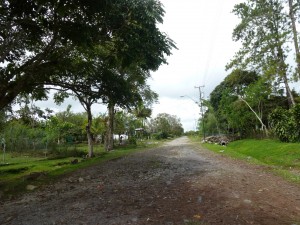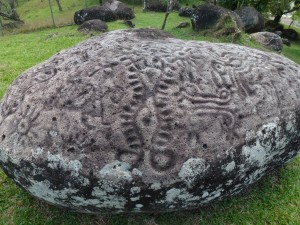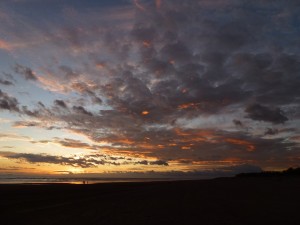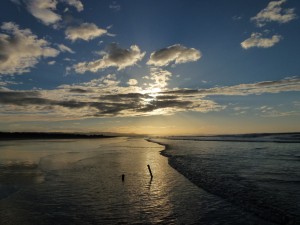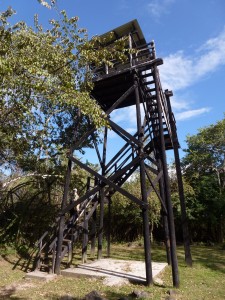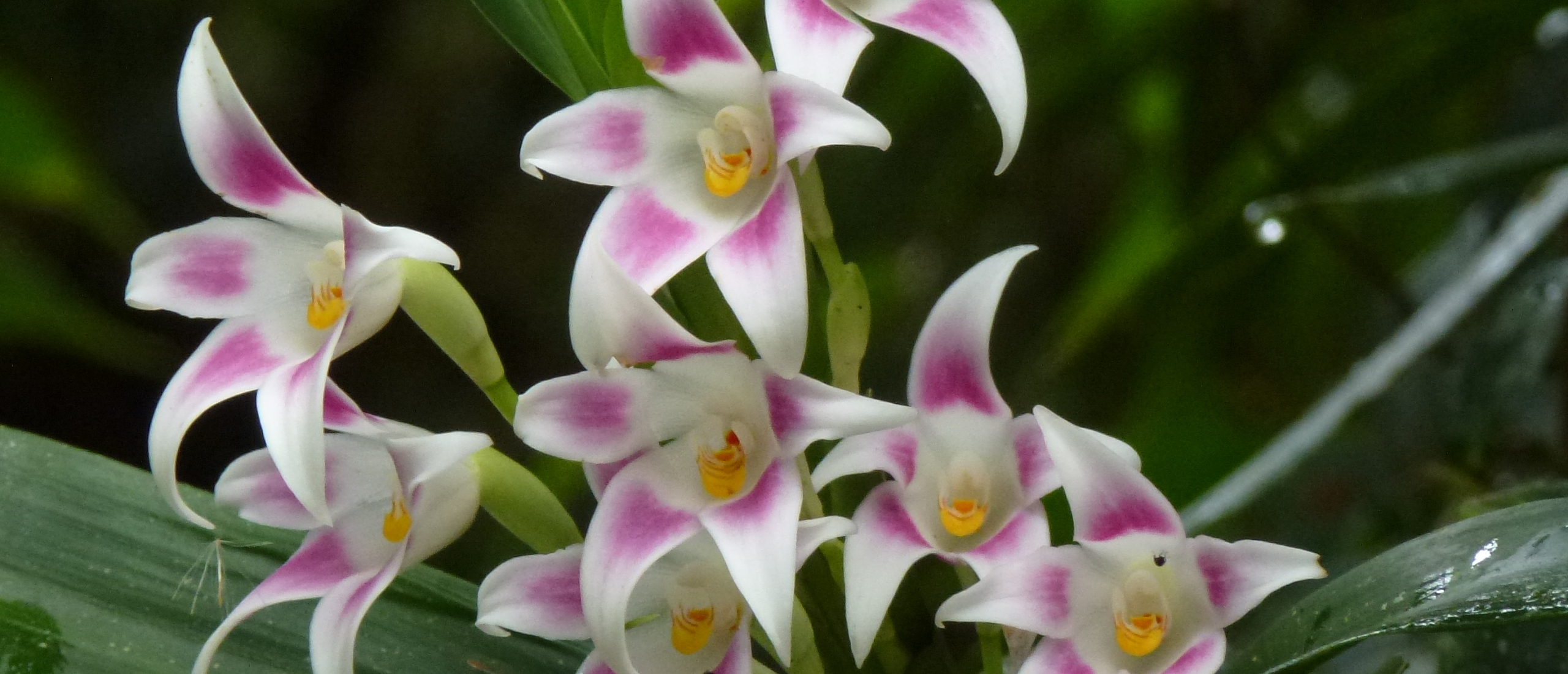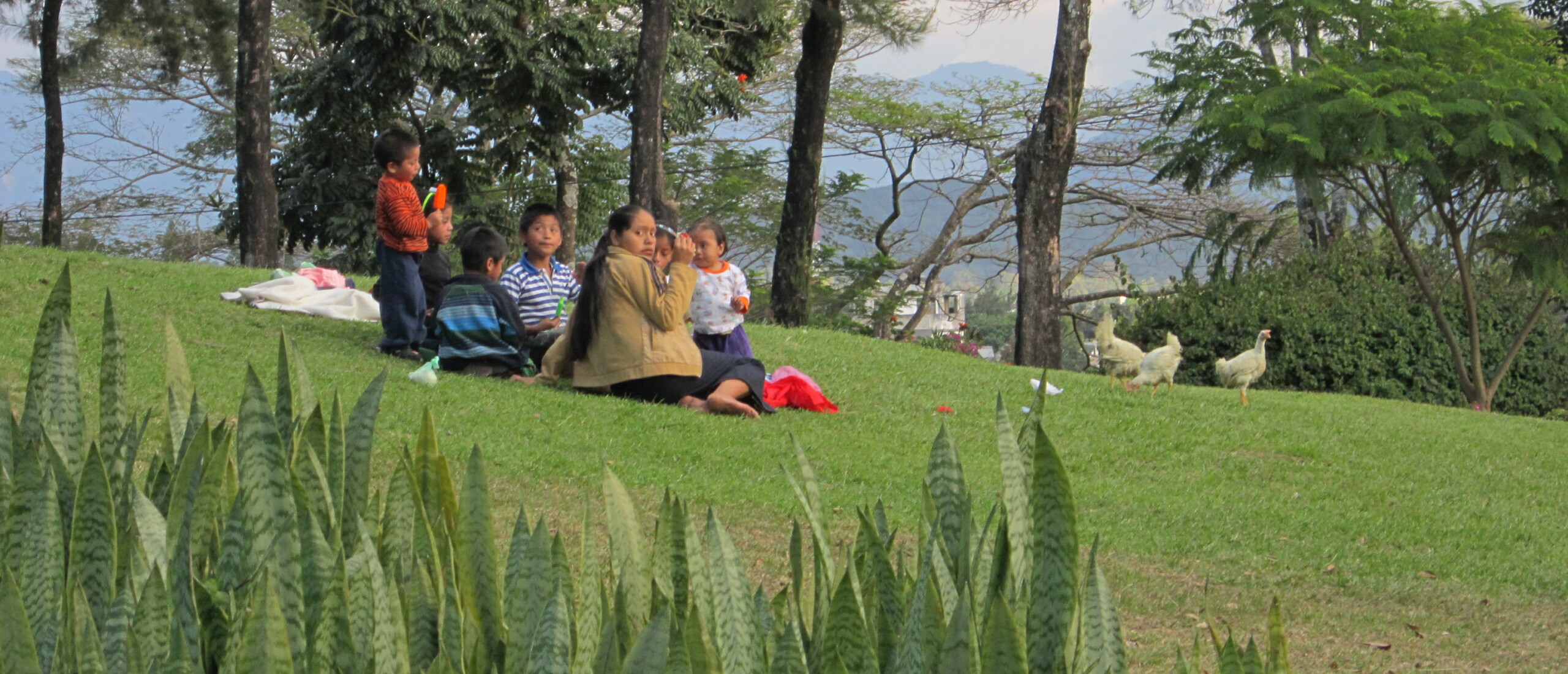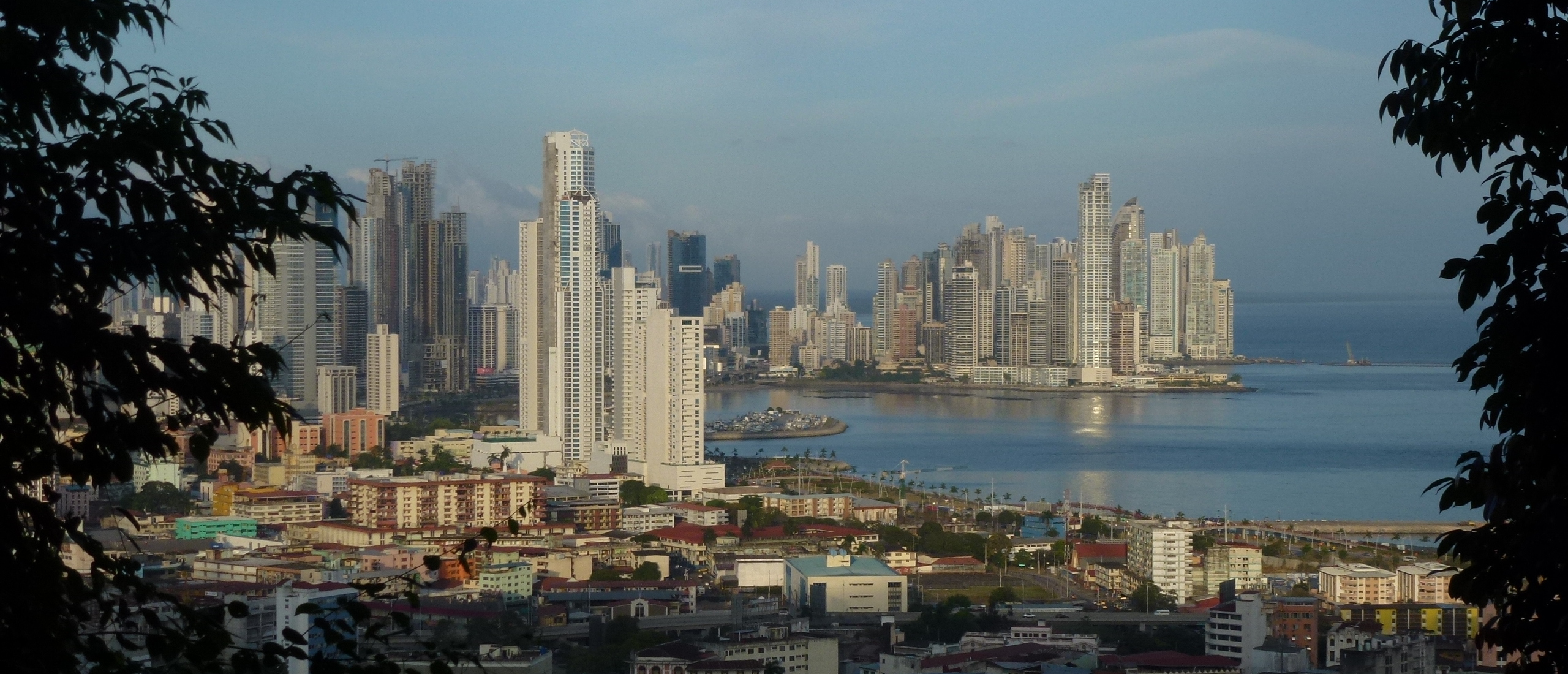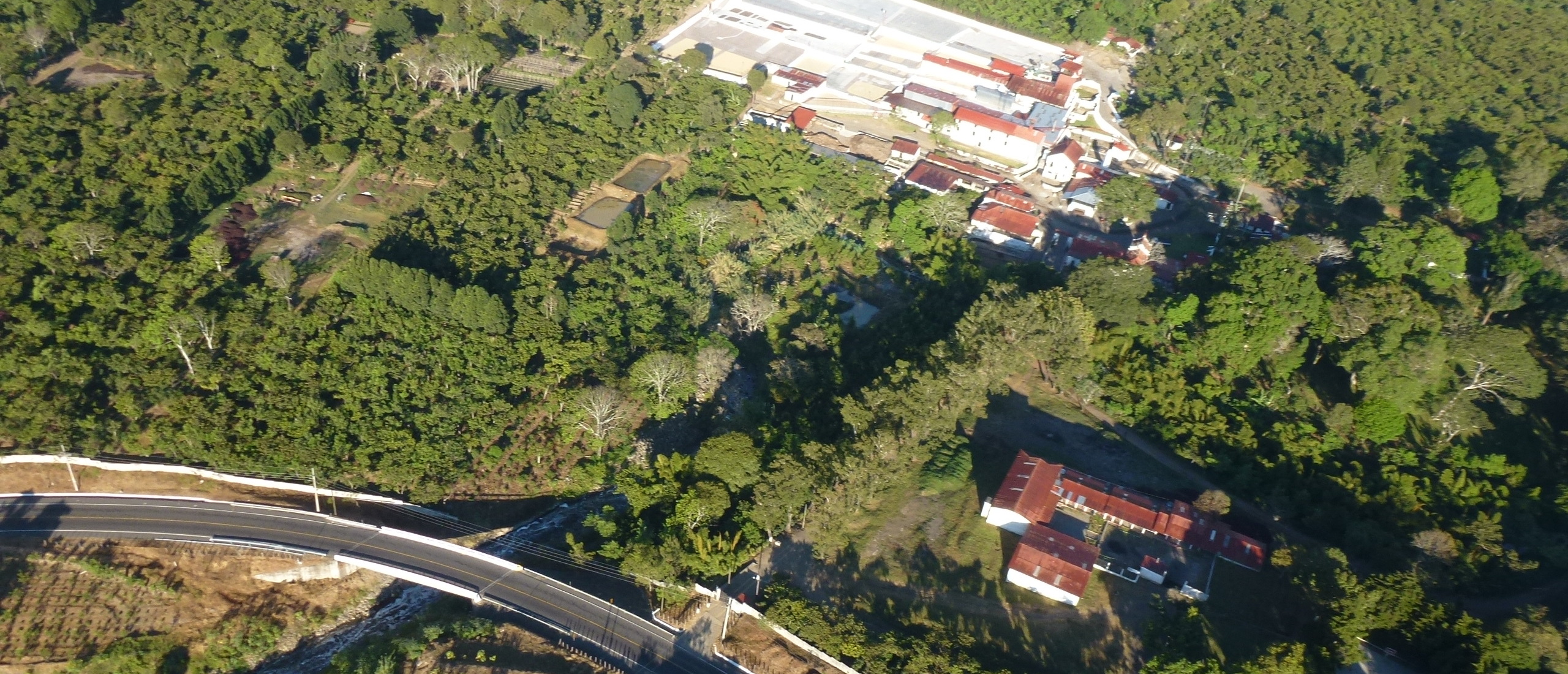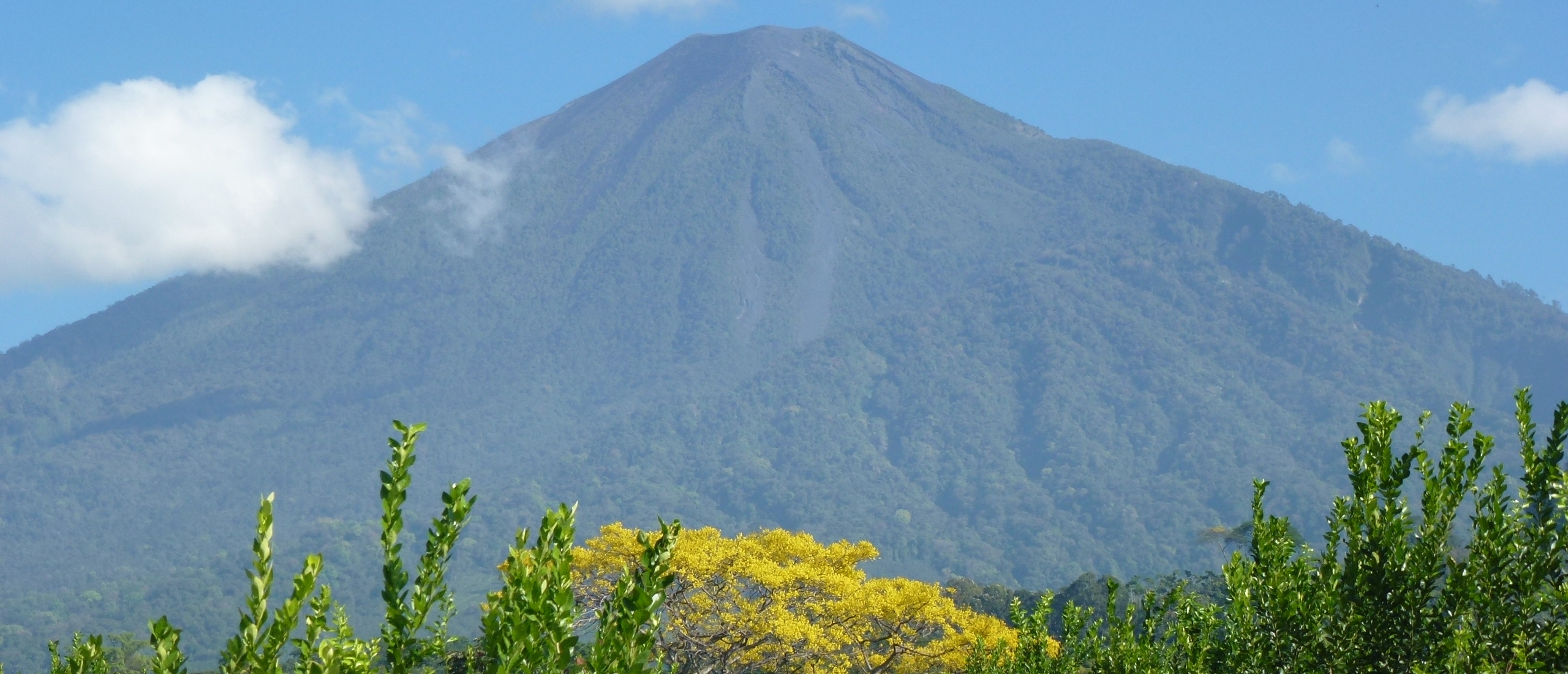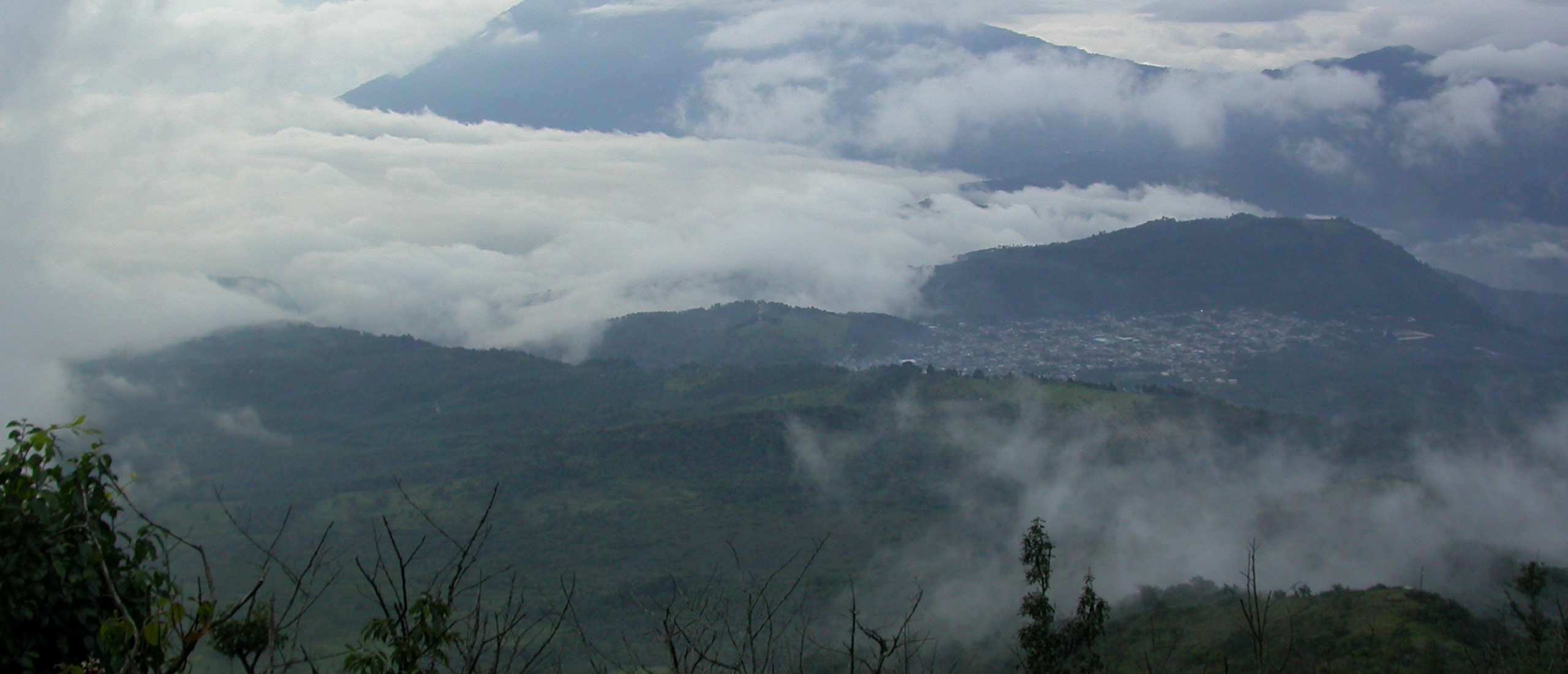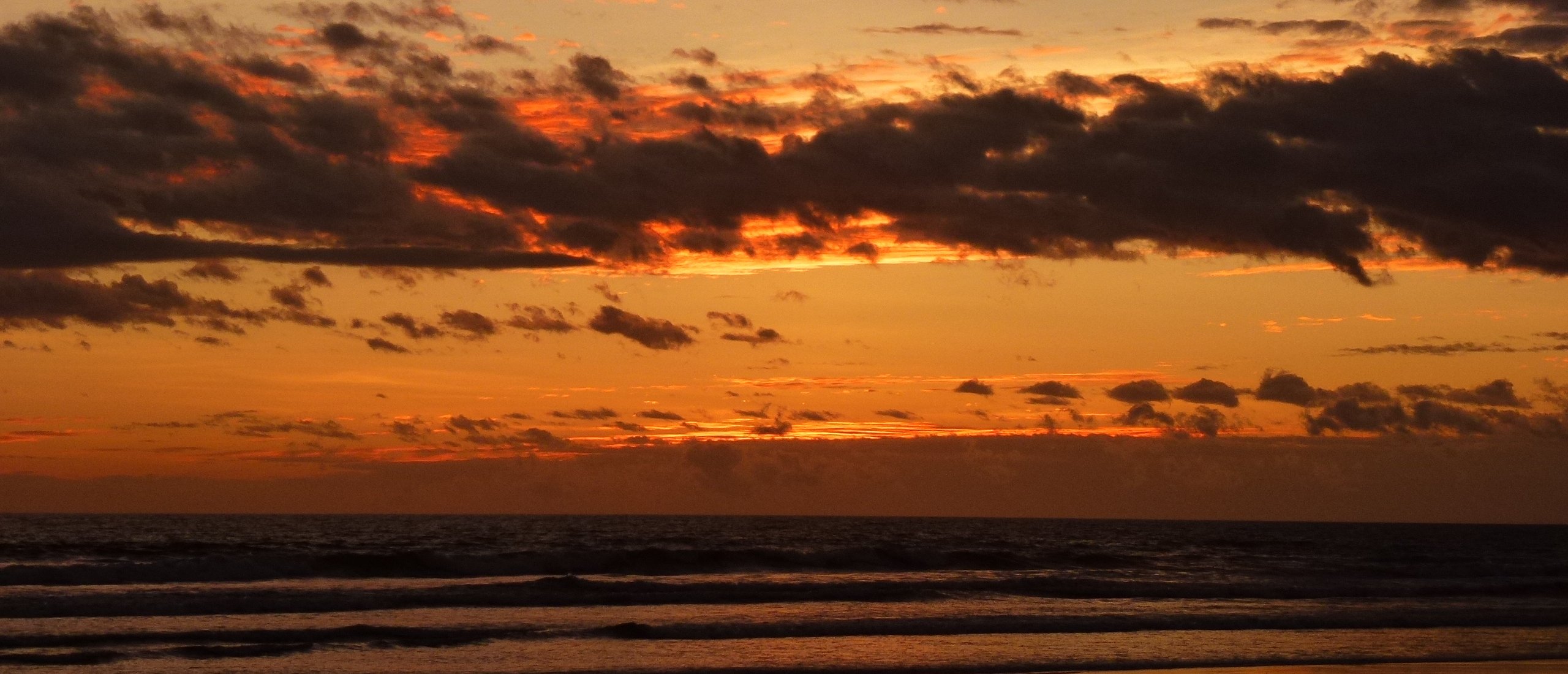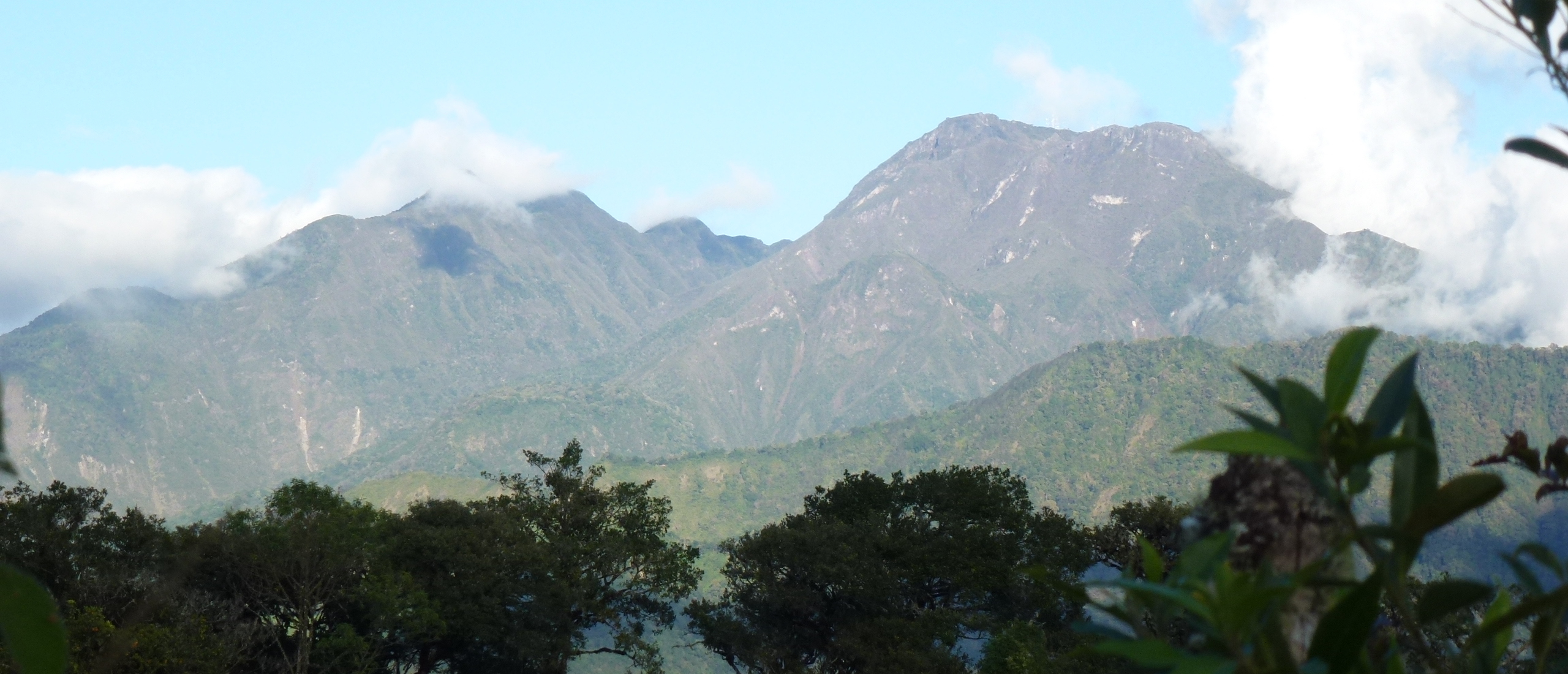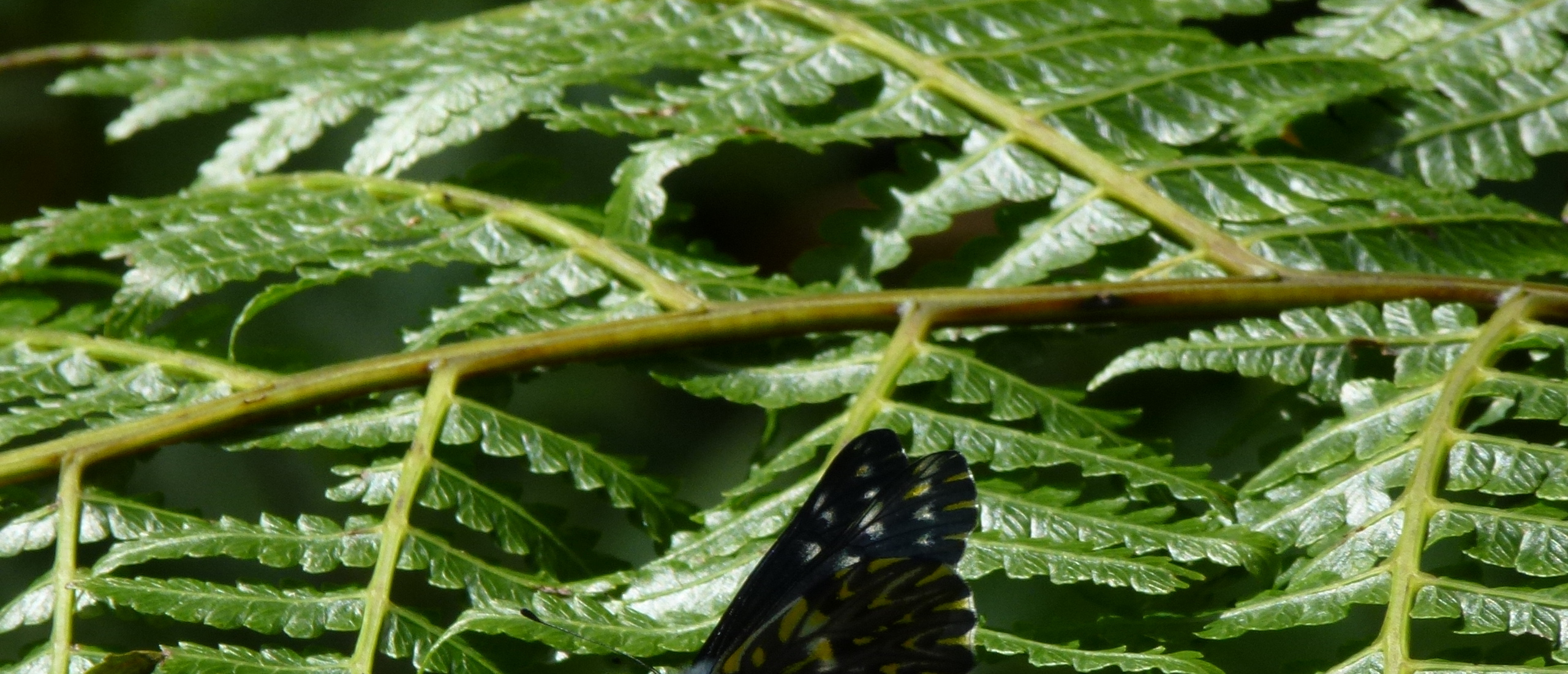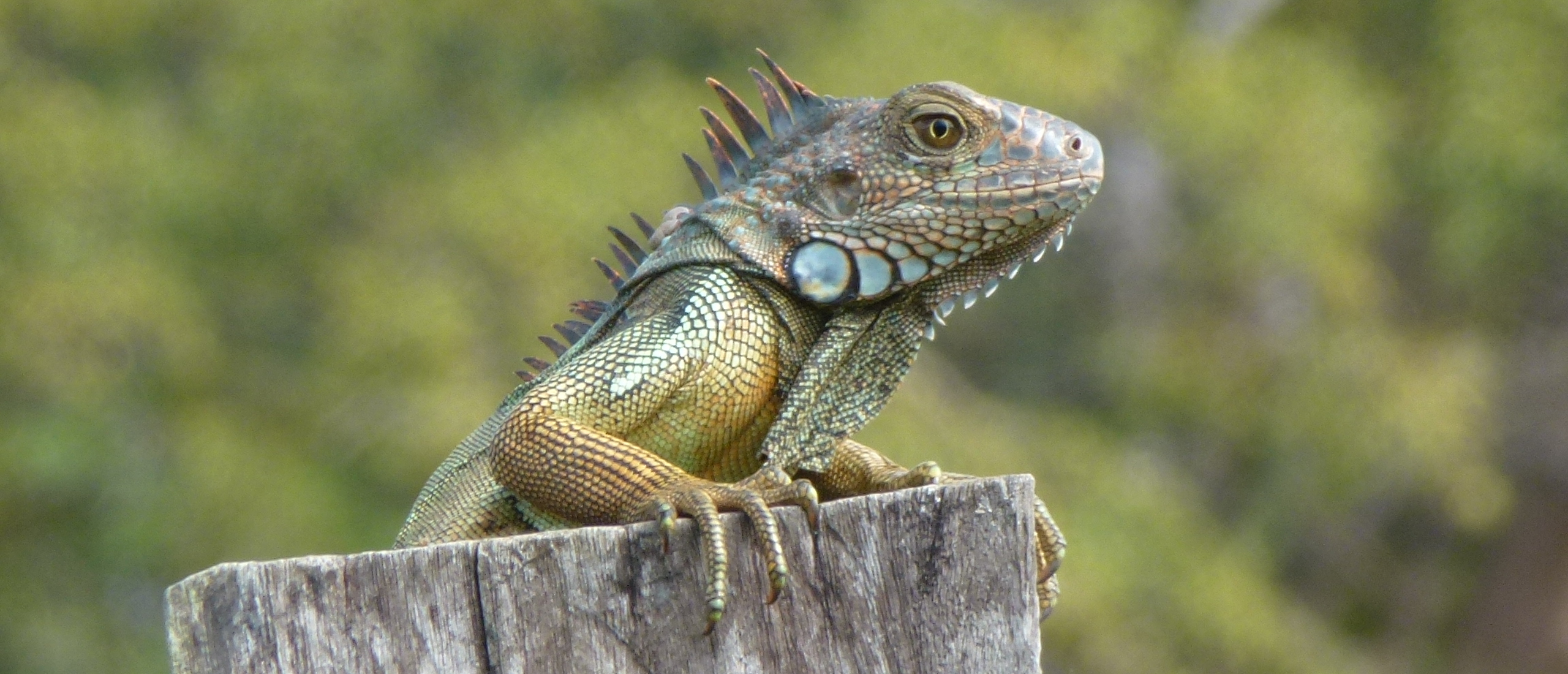
From the chilly highlands to the sweltering plains - getting warmer…in more ways than one! I am now back in Panama City, with much to report since the last update. On Tuesday 3rd, we had intended to go from our hotel in Guadalupe to the Las Nubes entrance of the Parque Internacional La Amistad, a flagship trans-boundary park that protects a vast area of the Cordillera de Talamanca in both Panama and Costa Rica, but due to reports from a Dutch couple in our hotel that they had seen three Quetzales at the El Respingo office of the Environmental Agency ANAM in a different area, in the Parque Nacional Volcán Barú, plus the fact that our birding guidebook mentions this as “one of the easiest places in the World to see the quetzal”, we changed our plan and went for this instead.
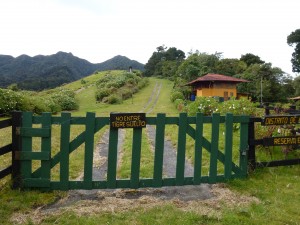 An interesting sign - Do not enter, tiger on the loose!The weather was dull and gloomy, with a spitting kind of rain, and the hike up to this location was tough going, but we finally made it, and the clouds cleared away a little. However, NO quetzal was to be seen anywhere. However, we headed a short way into the forest along the frustratingly named Camino de los Quetzales (the other end of which we had hiked a few days previously from above Boquete), but it was not long before we reached a section where the path had been swept away down a precipice, and although we certainly could have made our way carefully past this obstacle, we decided to head back up in the hope of seeing a quetzal – but to no avail! We did see a Black Guan, a large and elusive game bird, and a very cooperative Volcano Hummingbird, but feeling rather dejected, we retraced our footsteps to the car, and returned to the even more frustratingly named Eco-lodge Los Quetzales, where virtually every corner harboured a wooden carving or a painting of….a quetzal!
An interesting sign - Do not enter, tiger on the loose!The weather was dull and gloomy, with a spitting kind of rain, and the hike up to this location was tough going, but we finally made it, and the clouds cleared away a little. However, NO quetzal was to be seen anywhere. However, we headed a short way into the forest along the frustratingly named Camino de los Quetzales (the other end of which we had hiked a few days previously from above Boquete), but it was not long before we reached a section where the path had been swept away down a precipice, and although we certainly could have made our way carefully past this obstacle, we decided to head back up in the hope of seeing a quetzal – but to no avail! We did see a Black Guan, a large and elusive game bird, and a very cooperative Volcano Hummingbird, but feeling rather dejected, we retraced our footsteps to the car, and returned to the even more frustratingly named Eco-lodge Los Quetzales, where virtually every corner harboured a wooden carving or a painting of….a quetzal!
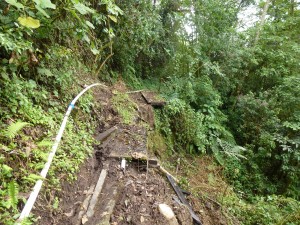 Here the Camino de los Quetzales had collapsed
Here the Camino de los Quetzales had collapsed
In the afternoon we ventured out again, this time to follow our original morning plan, and so it was that we ended up at Las Nubes, where we followed one of the trails that lead out from the national park office there. About halfway around the loop, at a point where I was very carefully climbing over an extremely slippery fallen log, I suddenly heard a characteristic bubbling call, and I shouted out “Quetzal!”, but was unable to look up myself. Hélène, however, was in a safer position, and she did look up, and that mythical bird flew across a clearing in the forest just above her. She described it as “like a snake flying through the air”, with its incredibly long tail feathers trailing behind it. And I missed it!!!! That’s what birders describe as being “gripped off”, i.e. someone else seeing what you wanted to see yourself! However, I have seen quetzals in both Costa Rica and Guatemala, so I should not complain too much. And I did later manage to see a Wrenthrush, a much more elusive and harder to see bird, which went some way towards compensating my damaged ego!
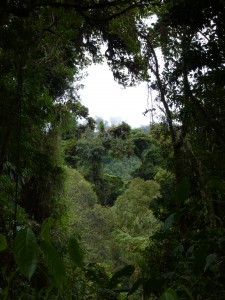 The Quetzal flew across near here - and I missed it!
The Quetzal flew across near here - and I missed it!
The following morning we departed the cool, rainy highlands, and, following our Canadian friend Rosalie’s advice, took a brand new and unsignposted road that cuts across from below Volcán to Potrerillos, snaking its way along the lower slopes of the volcano and removing the necessity to descend all the way to the Interamerican Highway if you want to travel between the two highland towns of Volcán and Boquete. But it was not for convenience that we took this route, but rather because this new road has opened up areas that are deeply associated with my great grandfather, entomologist George Charles Champion (“GCC”), who spent much time here in 1881 and 1882.
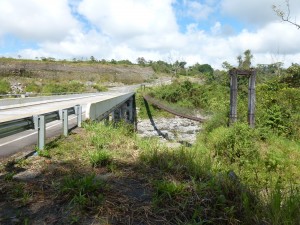 The old and the new along the road from Cuesta de Piedra
The old and the new along the road from Cuesta de Piedra
Following our amazing breakthrough in the quest to find the locations where he stayed, thanks to our finding the detailed map on the wall of the dining area of the Eco-lodge Los Quetzales, which marked many places which we had previously not had any indication of the precise locations of, and armed with photographs of this map, it was not long before we were actually driving into the tiny settlement of Nance Bonito, where GCC had based himself from 1st to 27th May, 1881. It was a strange feeling to visit this out-of-the-way place, which even today is a tiny hamlet, with only a dirt road, a small church and a small shop. While he was here, GCC apparently stayed at the Finca Eureka, but of this we could find no sign. Most of this area now forms part of a huge orange plantation belonging to a fruit juice company called Los Citricos S.A., and perhaps the Finca Eureka was absorbed into this. Such mysteries will have to be investigated at a future date – but it was a wonderful feeling to be so close to the footsteps of my great grandfather, even if not to find the precise house in which he slept.
 Self downing a bottle of Crush outside the store in Nance Bonito
Self downing a bottle of Crush outside the store in Nance Bonito
And Nance Bonito was not the only place where we touched upon the traces of George – we drove a short distance on the new road before turning off to the north-west onto a dirt track, which led us closer and closer to another location where he stayed, this time from 14th July to 1st August, 1881: La Elvira. However, we were finally thwarted in our mission to reach this place, as we came to a very unsafe-looking bridge, which we felt that perhaps it would not be wise to take our hired Fiat Panda over…and so another location will remain to be investigated at a future date, but at least we now know where it is, and that is a very important step.
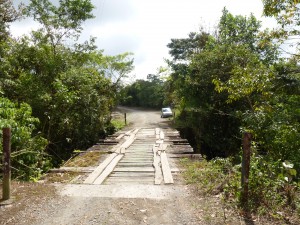 The bridge near La Elvira we decided not to take the Fiat Panda over
The bridge near La Elvira we decided not to take the Fiat Panda over
By this stage, time was running short, so we set off down to the capital of Chiriquí province, David, and drove through the centre of the city, around the Parque Cervantes, the main square, close to which GCC must also have stayed, but there were no signs of old buildings to be found, and we rapidly left the bustling city behind us, driving eastwards along the Interamerican Highway in our pleasantly air-conditioned car – George had to suffer the heat of this area on his mule; how different his experience must have been to the easy lifestyle we enjoy today. After we had been driving for some time (but nothing compared to the time GCC needed to cover the same ground on his mule – not to mention his poor “boy” Leopoldo, who had to walk), we turned off on a short detour to the village of Nancito, where George stayed from 23rd to 28th January, 1883, penniless, all his money having just been stolen from his saddle-bags in nearby Tolé. We had been told that Nancito boasted an insect museum, so of course it was imperative for us to visit….but sadly, nobody here seemed to have heard of such an institution, and they directed us instead to a small museum of ancient petroglyphs, which it has to be said were well worth seeing anyway.
By now we were getting a little tired, and we therefore headed down to the coast, to the tiny port of Boca Chica, from where GCC left on 18th March, 1883, on his way to Panama City; as he records in his itinerary: “En route to Panama in small coasting vessel carrying various passengers, who were accommodated in the open air on planks above the cargo of pigs”. As the voyage took five days due to adverse winds, it must have been quite an experience. Here, although we did not have to endure travelling with pigs, we did not find any suitable-looking accommodation, and so moved on eastwards to the seaside resort of Las Lajas, where we recommenced our search.
We started by trying the Cabañas Panamá, an attractive-looking complex of small A-frame huts run by a German from Berlin. These looked promising, but on closer inspection, we found that a great deal of cleaning was required, and the toilet and washbasin had not seen a cloth in weeks – perhaps George, after five days in a boat with those pigs, would have found this a luxurious establishment, but it is hard to excuse such slovenliness today – a real pity as the location was excellent and the buildings themselves rustic but potentially pleasant. To cut a long, and increasingly desperate story short, we could find nothing in Las Lajas, where either you have to spend at least $200 a night to stay in the Las Lajas Resort (which was full anyway), or rough it in sweltering and dirty cabins….or so we thought, until on the way out we saw a sign saying “Italian Bed and Breakfast”. Without much hope, we called the number on the sign, and to my great relief a charming Italian voice answered, saying that yes they did have a room available, and that so long as our car could make it along their extremely rough access road for 1.8 kms, we were most welcome. Well, perhaps it was lucky we had a Fiat, because it made it to the Italian Bed and Breakfast, the Casa Laguna, where we were welcomed by our hosts Maria and Michele, who have created this haven over the past two years, and I can thoroughly recommend it! We took a walk along the beach in the sunset before enjoying a delicious dinner cooked by Maria, before turning in for a well-earned sleep.
The following morning, after an early walk again along the deserted beach, we reluctantly left this haven, and headed back towards the main road, stopping to check the birds on a wonderful muddy lagoon just inland from the village, where despite the appalling smell of some unfortunate dead animal, we were treated to views of among other delights a bright pink Roseate Spoonbill, a Bat Falcon perched on a dead tree, and a rare and local hummingbird, the Veraguan Mango. From here we left the footsteps of GCC, as he had of course covered the arduous journey back to Panama City in his boat with the pigs. Our Fiat Panda was a luxury in comparison, and we soon reached the small town of Divisa, where we turned off following the directions in the bird guidebook, finally reaching the wonderful lake and marsh of Las Macanas, where despite the heat, we enjoyed panoramic views from an elevated tower of such delights as numerous Black-bellied Whistling Ducks and two Lesser Scaup, raptors including a White-tailed Kite mobbing a Northern Harrier, an Osprey hovering hopefully over the water, and nearby, two Aplomado Falcons being chased off by Great-tailed Grackles. It was encouraging to see such an incredibly rich wetland, apparently well protected, even though it looks just the sort of place that agriculturalists would love to drain and turn into no doubt highly productive farmland.
Although it was getting late, our day had not yet ended as we returned to the highway and continued eastwards, turning off again at the town of Aguadulce, from where we drove down towards to coast, where we passed through a fabulous complex of semi-abandoned saltpans, now forming an incredibly rich habitat for birds. Here we added such species as Gull-billed and Caspian Tern, Limpkin, both Lesser and Greater Yellowlegs in the same binocular view, and many more. We eventually came out at the beach, where many more shorebirds were to be seen (although the piles of plastic trash were sad to see; as in Guatemala – and indeed in Scotland, and to my dismay even in the formerly clean Netherlands, it seems to be totally acceptable to just dump your rubbish anywhere these days), before we finally headed back to the highway, before checking into our hotel in Penonomé for the night.
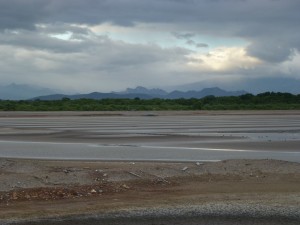 The wild and lonely saltpans of Aguadulce
The wild and lonely saltpans of Aguadulce
The final chapter of this Panamanian adventure will come in the next post, which will be my last from here before I return for a few days to Guatemala, before finally drawing the curtain on this great Central American journey.


